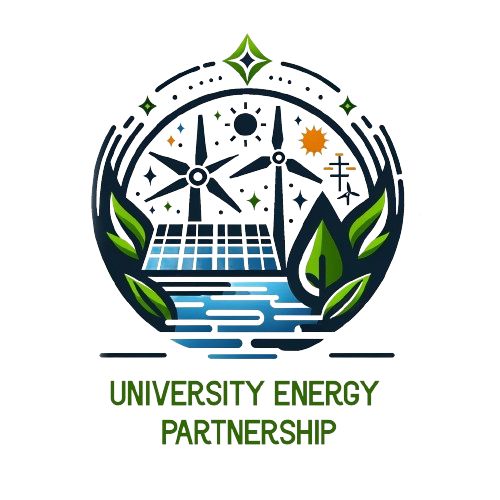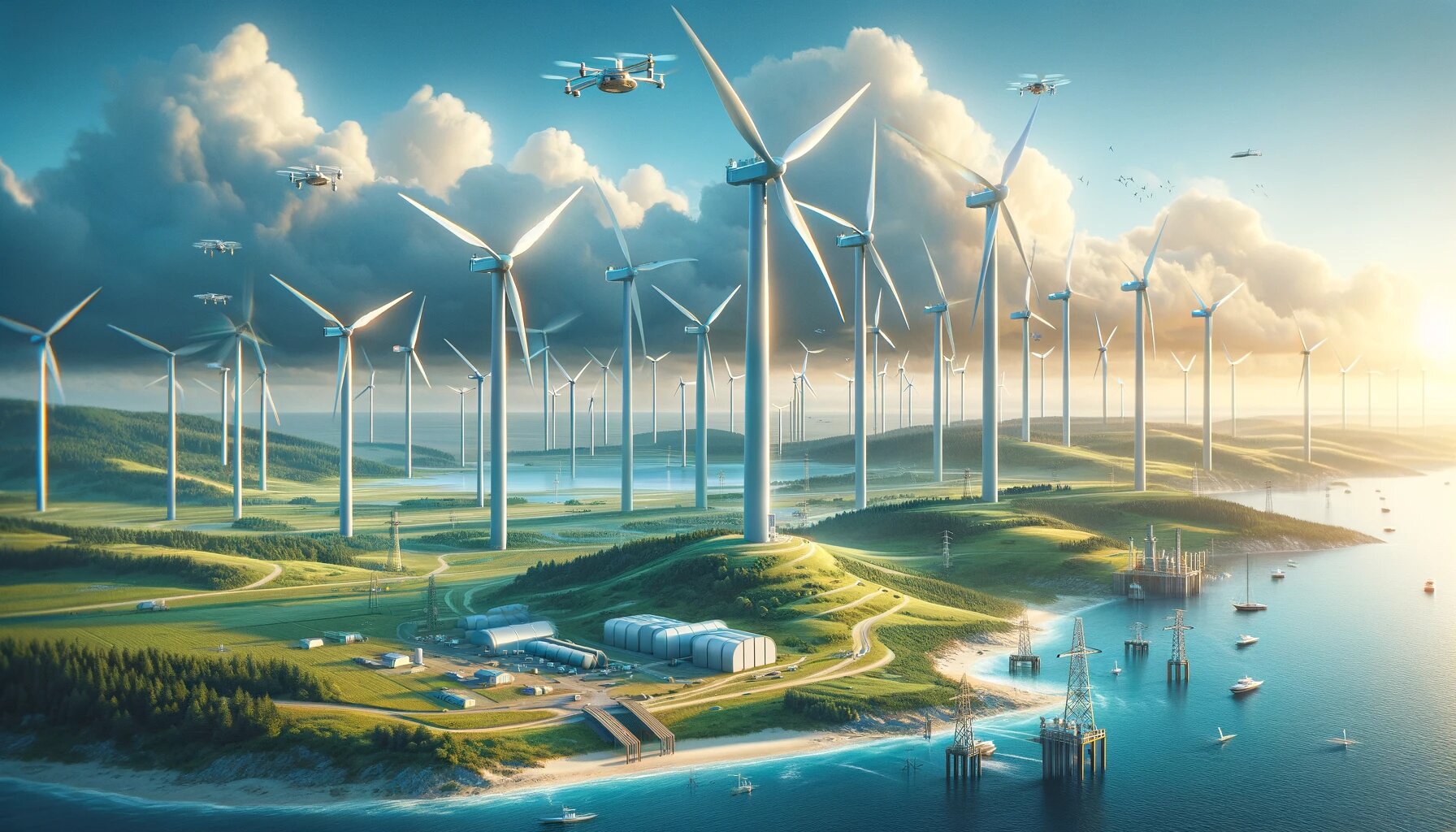Wind energy has long been hailed as a promising source of renewable energy, and in recent years, significant breakthroughs in wind energy technology have brought us closer to harnessing the full potential of this abundant resource. As the world grapples with the urgent need to transition to clean and sustainable energy sources, these breakthroughs are paving the way for a brighter and greener future. This article will explore the latest advancements in wind energy technology, from improved turbine design to innovative grid integration solutions, and their implications for a more sustainable energy landscape.
The Evolution of Wind Turbine Design
Larger and More Efficient Turbines
One of the most prominent breakthroughs in wind energy technology is the development of larger and more efficient wind turbines. Traditional wind turbines have seen a dramatic increase in size over the years, with modern turbines reaching heights of over 800 feet and rotor diameters exceeding 350 feet. These colossal structures are capable of capturing wind energy at higher altitudes where wind speeds are more consistent and stronger, resulting in increased energy production.
Moreover, these larger turbines are equipped with advanced blade designs, such as aerodynamic shapes and materials, that enhance their efficiency. Using carbon fiber composites and innovative blade designs reduces drag and allows more energy to be extracted from the wind. As a result, these modern turbines can generate more electricity while requiring fewer turbines to produce the same amount of energy.
Vertical Axis Wind Turbines (VAWTs)
Traditionally, horizontal axis wind turbines (HAWTs) have dominated the wind energy landscape. However, recent advancements have brought vertical-axis wind turbines (VAWTs) into the spotlight. VAWTs have several advantages over their horizontal counterparts. They are less affected by changes in wind direction and can be placed closer together, making them suitable for urban environments and offshore applications where space is limited.
Furthermore, VAWTs can operate at lower wind speeds, expanding their potential deployment areas. Researchers and engineers continue to refine VAWT designs, improving their efficiency and reliability. These innovations open up new possibilities for harnessing wind energy in unconventional locations and further diversifying the renewable energy portfolio.
Advanced Materials and Manufacturing
Lighter and Stronger Materials
Advanced materials play a pivotal role in the evolution of wind energy technology. Engineers are constantly seeking materials that are both lightweight and durable to reduce the weight of turbine components while ensuring their long-term reliability. Carbon fiber composites, for instance, are increasingly used in turbine blades due to their exceptional strength-to-weight ratio.
These materials enable the construction of larger and more efficient turbines and reduce maintenance costs by prolonging the lifespan of wind turbine components. As technology continues to advance, we can expect even more breakthroughs in material science that will further optimize wind turbine performance.
3D Printing
Additive manufacturing, commonly known as 3D printing, has found its way into the wind energy sector. This innovative technology allows for the rapid prototyping and production of complex turbine components with unprecedented precision. 3D printing enables the creation of custom-designed parts that are tailored to specific turbine models, resulting in improved efficiency and reduced costs.
Additionally, 3D printing reduces waste during manufacturing, aligning with the sustainability goals of the renewable energy industry. As 3D printing continues to mature, its integration into wind turbine production promises to accelerate advancements in the field.
Enhanced Wind Resource Assessment and Forecasting
Lidar Technology
Accurate wind resource assessment and forecasting are critical for optimizing the performance of wind farms. In recent years, lidar technology (light detection and ranging) has emerged as a game-changer in this regard. Lidar systems use lasers to measure wind speed and direction at various heights above the ground, providing detailed wind farm planning and operation data.
Unlike traditional anemometers mounted on meteorological towers, lidar devices are portable and can be deployed quickly to gather wind data at specific locations. This flexibility allows for more precise site selection, reducing the risk of investing in suboptimal wind farm locations. Lidar technology also enhances the efficiency of turbine control systems by providing real-time wind data for rotor alignment, further increasing energy capture.
Grid Integration and Energy Storage
Smart Grids and Grid-Friendly Wind Farms
As the share of wind energy in the overall energy mix grows, grid integration becomes increasingly important. Smart grids are emerging as a crucial component of this integration process. These advanced grid systems can efficiently manage the fluctuating output of wind farms, ensuring a stable and reliable power supply.
Grid-friendly wind farms utilize advanced control systems to smooth out power fluctuations, making wind energy more predictable and manageable for grid operators. These farms can also provide valuable grid services, such as frequency regulation and voltage support, enhancing the stability of the electrical grid.
Energy Storage Solutions
Energy storage technologies, such as advanced batteries and pumped hydro storage, are becoming essential for storing excess wind energy when production exceeds demand and releasing it when needed. These storage solutions mitigate the intermittent nature of wind energy and enable a more consistent power supply.
Breakthroughs in energy storage technology, such as the development of high-capacity and long-lasting batteries, are crucial for the widespread adoption of wind energy. Improved energy storage systems allow wind farms to deliver a reliable and continuous energy supply, reducing the reliance on fossil fuels during periods of low wind.
Offshore Wind Power
Offshore Wind Farms
The offshore wind energy sector is experiencing remarkable growth, driven by technological advancements and favorable wind conditions in coastal areas. Offshore wind farms benefit from higher and more consistent wind speeds, reducing the intermittency associated with onshore installations.
Floating wind turbines are a particularly exciting breakthrough in offshore wind technology. These turbines can be placed in deeper waters, where wind speeds are generally higher and are not limited to fixed foundations. Floating platforms open up vast expanses of untapped wind resources in deeper ocean waters, expanding the potential for offshore wind energy development.
Environmental Considerations and Wildlife Protection
Avian Radar and Monitoring Systems
As the wind energy industry expands, minimizing its impact on wildlife becomes increasingly important. Avian radar and monitoring systems are innovative technologies designed to detect the presence of birds and bats near wind farms. These systems provide real-time data to wind farm operators, allowing them to curtail turbine operations during periods of high wildlife activity, thus reducing the risk of bird and bat collisions.
Moreover, advancements in turbine design and placement aim to reduce the risk to avian species. Innovative blade designs and tower configurations can make turbines more bird-friendly, while careful site selection and habitat restoration efforts can help mitigate the impact on local ecosystems.
Policy and Investment
Government Incentives and Private Investment
Government incentives and private investment have played a significant role in driving advancements in wind energy technology. Many countries have implemented policies that promote the development of renewable energy sources, including wind power. These policies may include tax credits, feed-in tariffs, and renewable energy targets.
Private companies and investors are also recognizing the potential of wind energy and are committing substantial resources to research and development efforts. This influx of funding accelerates technological breakthroughs and makes wind energy more competitive with fossil fuels.
Conclusion
The recent breakthroughs in wind energy technology represent a significant step forward in the global transition to sustainable and renewable energy sources. From larger and more efficient turbines to innovative materials, grid integration solutions, and offshore developments, the wind energy sector is experiencing a period of rapid innovation and growth.
As these advancements continue to mature and become more accessible, wind energy will play an increasingly vital role in reducing greenhouse gas emissions and mitigating the effects of climate change. With continued support from governments, private investors, and the dedication of researchers and engineers, wind energy is poised to become a cornerstone of the clean energy landscape, providing a brighter and more sustainable future for generations to come.

